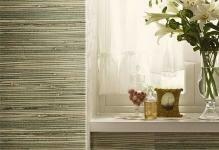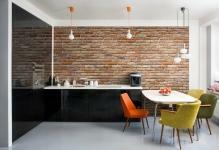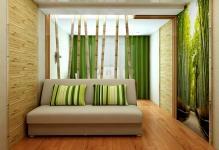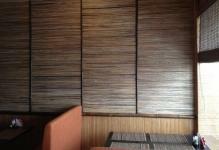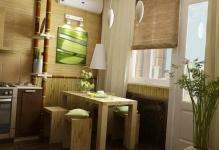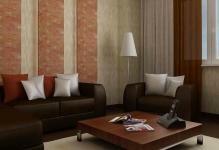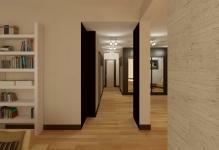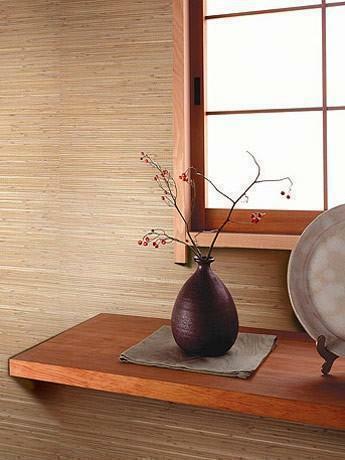 Natural wallpapers will fit in almost any interior Natural wallpapers are great for finishing houses, apartments, offices. They are used for gluing absolutely any rooms. Still, natural wallpaper can be combined with each other in color and texture, and also, combine with other types of wallpaper and coatings. Natural wallpaper is so practical that they even pasted and decorate furniture. Wallpaper from the natural composition perfectly fit into any style of the interior.
Natural wallpapers will fit in almost any interior Natural wallpapers are great for finishing houses, apartments, offices. They are used for gluing absolutely any rooms. Still, natural wallpaper can be combined with each other in color and texture, and also, combine with other types of wallpaper and coatings. Natural wallpaper is so practical that they even pasted and decorate furniture. Wallpaper from the natural composition perfectly fit into any style of the interior.
-
-
- (Video)
- Design of natural wallpaper( photo)
What are the wallpapers of natural materials
In the production of natural wallpaper, mostly natural materials are used andManual discharge work. Natural materials are applied to the base of thickened paper, non-woven fabric and other strong materials, therefore they are considered a double sheet. Natural wallpaper has a high noise insulation and thermal insulation, due to its density and double layer.
Despite the high density and thickness of wallpaper, natural wallpaper does not interfere with air exchange in the room, so the walls do not hold moisture.
For the production of natural wallpaper, natural materials of natural origin are used, which are first extracted, processed, prepared for use, and then only used as the finishing of wallpaper.
 Natural wallpaper is made by gluing natural materials onto a paper or non-woven base
Natural wallpaper is made by gluing natural materials onto a paper or non-woven base
In the production of natural wallpaper, the following materials are used:
- Different types of bamboo;
- Vegetation;
- Textiles;
- Veneer;
- Mica;
- Stopper.
All natural wallpaper is obtained by applying certain materials to the substrate. Of the vegetation, for natural wallpaper, nettles, hay, cane, and string are most often used. Bamboo is used different: young, old, soaked, opened with varnish.
The best textiles for natural wallpaper - it's silk. It surpasses the most dense types of wallpaper in quality and in terms of noise insulation.
Veneer and cork are produced by grinding bark of noble and valuable trees. Wallpaper with mica are obtained during gluing on a paper or non-woven base of vermiculite.
How to make wallpaper for a natural stone
The most heavy-duty, moisture resistant and original are wallpaper under natural stone, which is made with the help of a variety of rock. The wallpaper for a natural stone is also made of two layers. The first layer is paper or non-woven, and the second layer is directly the lining of stones.
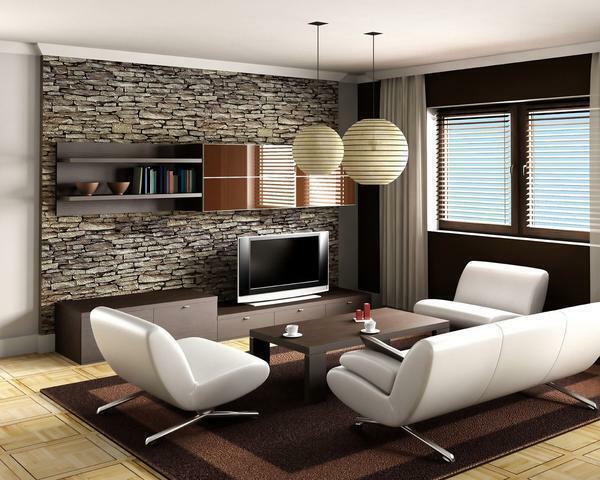 Natural stone wallpapers are also two-layered: fine-grained rocks are used as the top layer.
Natural stone wallpapers are also two-layered: fine-grained rocks are used as the top layer.
In the production of wallpaper for stone, the following materials are used:
- Wild stone;
- Rubble;
- Decorative tiles;
- All kinds of decorative bricks;
- Red brick.
The stone is subject to pre-treatment and grinding, it is knocked down or dispersed into small particles. Then the stones are applied together with a solution of special glue on a paper or non-woven fabric under the press. To ensure that the wallpaper under the stone was easy to handle and they are less polluted, they are opened with a special lacquer that emphasizes the naturalness of the stone and makes the use of this type of wallpaper more practical.
The size of the stones on the wallpaper can vary, depending on the method of grinding rock, from the smallest crushing, to using natural stones in the original size.
How to glue natural wallpaper: wall mounting rules
Compared to conventional wallpaper, natural wallpaper is glued more difficult, because it requires careful preparation work with surfaces and careful handling of the wallpaper in the process. Before gluing the natural wallpaper, the walls should be plastered as necessary and must be primed. Natural wallpaper is glued to the wall with a special glue. For gluing the room with natural wallpaper, you need to use only the glue that wallpaper makers recommend.
 Natural wallpaper requires a more thorough preparation of the walls, as well as a careful attitude when gluing
Natural wallpaper requires a more thorough preparation of the walls, as well as a careful attitude when gluing
How to glue the natural wallpaper:
- The acquired wallpaper rolls need to be fully deployed and aligned, take that temperature and humidity condition, Which is in the room.
- Dilute the glue in cold water and let it brew, meanwhile prepare the strips.
- Strips need to be cut with sharp scissors or a construction knife, always leaving 5-10 cm of stock.
- The wallpaper itself is heavy, so the glue needs to be applied with a roller or brush on the wall and on the linen, glue the wallpaper to the joint in the joint, in no case overlapping each other.
- The first strip of wallpaper is better to glue on the level, as natural wallpaper too highlight the curvature and unevenness of the walls.
For smoothing wallpaper from natural materials when gluing, it is better to use a special rubber pen, or use a cut of fabric from natural material, so as not to disrupt the texture of wallpaper. Further, all by the rules, the room should not have a draft, in the first 1-2 days after the wallpaper is pasted.
Wallpaper Cosca and Marseille must be glued only after the priming of the walls and only more suitable glue to them, as well as other types of wallpaper.
Wallpapers of natural material: pluses and minuses
Wallpaper of a natural material environmentally friendly, safe for health, durable in operation, have a high level of sound and heat insulation. They look nice in any interior and harmoniously complement any room.
The main advantages of natural wallpaper - environmental friendliness and excellent appearance But in spite of a number of significant advantages of natural wallpaper in comparison with other types, natural wallpapers have a number of drawbacks: Everyone chooses the style of the interior themselves, natural wallpaper will suit any style, they create a cozy and warm home atmosphere. Wallpapers for a stone and a tree are combined with green, gray and sand color. A combination of plant wallpaper with brown, yellow and gray will look just great. Adhering to harmony in all the details in the interior, you can create your own design of a room or room with your own hands, using natural wallpapers for this.
Natural wallpapers in the interior( video)
natural design wallpaper( photos)

